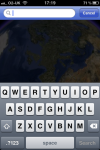 Welcome to the final, ‘I’ve bought an iPhone…now what? post. For links to the first and second post, see the bottom of this post. In this final roundup of Apps, I cover the following genres from the Appstore: Productivity, Reference, Social Networking, Sports, Travel and Weather. To download an App, click on the relevant App icon.
Welcome to the final, ‘I’ve bought an iPhone…now what? post. For links to the first and second post, see the bottom of this post. In this final roundup of Apps, I cover the following genres from the Appstore: Productivity, Reference, Social Networking, Sports, Travel and Weather. To download an App, click on the relevant App icon.
Productivity :


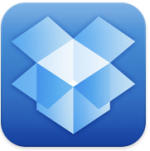
2Do- One of the best todo Applications on the store, with a bolster of features that range from extensive search features and location based tasks. Unlike other Apps in this genre, 2Do features calendar integration which helps sort tasks into categories. 2Do also provides further integration features by importing contacts into the App, so they may be tagged in tasks, as well as featuring a sync and backup facility that syncs the todo data with your PC or Mac. (Lite and paid version, £2.39, scored 5 out 5 in an Appjudge review)
Opera Mini- The first real alternative to Mobile Safari, that doesn’t use webkit to power your browsing experience. Opera have opted to use their own in house compression software that allows users to surf the web quicker, especially over a 3G and Edge connection. The compression software cuts down the data that’s downloaded to view a site by up to 90%, meaning that not only does this App save you time, but money as well, since you’re using less bandwidth. Opera Mini also comes with some good features that help differentiate from Safari and other browsers, such as the Speed dial, which allows you to quickly access your favourite bookmarks, as well as Opera link, which syncs your bookmarks, history and passwords from the desktop client to your device. (Free, scored 5 out 5 in an Appjudge review)
Dropbox- For those with a Dropbox account, the official App, is a must. Not only does it provide you with an easy way to view all your Dropbox files on your iDevice, but it also allows you to upload content from your device. As well as this, files that are selected to go in the favourite section can be accessed later without the need for a data connection, meaning that your most important files are only a few touches away. To aid with navigation, the user interface of the App focuses around simplicity, with a search bar at the top, and content such as photos being displayed in the gallery view. (Free, scored 4 out of 5 in an Appjudge review)
Reference :
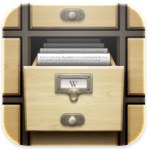


Articles- A good front end that allows you to search and view all of the articles on wikipedia. Rather than resort to the mobile version of the wikipedia site or another App, Articles hopes to draw in users with it’s clean and intuitive interface. Articles allows the user to just focus on the information that’s being shown by displaying the text in a clear format and shrinking images, that can be enlarged once tapped upon. As well as this, Articles features a number of other unique features that helps set it apart from other Apps, such as the ability to search for related Wikipedia articles based on your location and a bookmarks feature, allowing you to come back to favourite articles. (£1.79)
Dictionary.com- There will be times, when even the best of us need to look up the spelling or definition of a word, and for those times, you should turn to the Dictionary.com App. Unlike similar Apps in this niche, the Dictionary.com App stores the majority of the words on your device, meaning that the App weights in at 44 megabytes, but the advantage of this, is that you won’t require a data connection for looking up most words. As well as providing the obvious lookup functionality, the App can pronounce words, give example sentences and give the origin of the word as well as provide Thesaurus functionality. The App comes in two different flavours; a free ad supported version, and a paid App without the adverts. (Free and paid version,£1.19)
Wolfram Alpha- Sometimes Wikipedia just won’t do, and for those times in which you require a reliable answer, the Wolfram Alpha App will have you covered. The App gives you access to all the high quality information that the site offers, but it’s contained within an optimised interface, that promotes easy of use and navigation. For those of you with an iPhone 4, the App will alter image quality depending on the strength of the data connection that your device is receiving. (£.059)
Social Networking :



Facebook- Rather unsurprisingly, the official Facebook client is the best way to stay in touch with your friends. The App has all the features of the main site, such as chat, events, notes, contact search and the ability to ‘like’ statuses. The App also boasts features that are unique to the mobile platform, such as push notifications, that will notify you when you receive a new message, notification or friend request. As well as this, the App has recently been updated to include, Places, which allows you to checkin at places, Foursquare style, and tag friends who are with you. (Free)
Foursquare- The App gives you access to the up and coming service, based around ‘checking in’, with your friends as you travel around different locations. In an attempt to encourage users to continue to check in, the App incorporates game mechanics, based around points and mayorships. Each time you checkin, you are rewarded with a set number of points, on top of which, bonuses points can be added, for performing certain actions. Checkin to a location more times than anyone else, and you become the mayor, with some shops and restaurants offering special discounts to their mayors. But, if someone else checkins to the location more than you, then you’ll lose your mayorship, along with your special discounts. As well as the gameplay elements, Foursquare provides information regarding the area you’ve checked into and allows users to add tips. Overall, the unique gameplay elements, combined with the location based information, makes this an App to have. (Free)
Twitter- The web service Twitter has recently bought out one of the best Twitter Apps on the Appstore, ‘Tweetie 2’ and re branded it as their own with some minor changes. The App gives you access to all the same functionality of the website such as the ability to send direct messages, share photos and videos, realtime search and Tweet, along with all the relevant hashtags. (Free)
Sports :

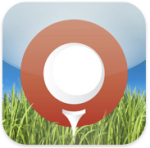
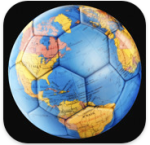
Sky Sports Score Centre- Love Football as much as I do? The Sky Sports Score Centre App allows you to keep up to date with all the related news, score and fixtures of your team, when you’re on the move. The App allows you to create a customised homepage, which is based around your favourite team, and features content, such as next fixtures, latest scores and league position. You can also access scores from all the different leagues, as well as text commentary, team line ups and photos. Overall this is a very well polished App and one of the easiest ways to find out the latest scores. (Free)
Golfshot: Golf GPS- For those of us without our own caddy, the Golfshot App is the next best thing. The App provides detailed maps and information on over 33,000 courses across the globe. The App has a number of features that aim to aid golfers that utilises the device’s GPS, such as the ability to touch a point on a hole and get distances to that point and from there to the green. (£17.99)
iSport- If you find yourself in an unfamiliar location and feel the need to play your favourite sport, whether that be football or tennis, the iSport App could become one of your best companions. The App makes use of the GPS function in your device to locate the nearest football pitch or tennis court. All you need to do, is decide which sport you want to play, and from there the App will provide a map to your chosen location as well as contact details. The user interface is simple and to the point, allowing you to quickly find the information that you need. (£0.59)
Travel :
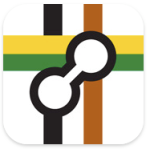


London Tube Deluxe- Whether you’re visiting London for the first time, or you’re a resident, the London Tube Deluxe App will help you navigate the maze of underground trains more efficiently and quicker. To achieve this the App has an array of features such as, a tube map, live departures board, timetables, status updates and push notifications. But by far the most useful feature being the journey planner, which allows you to pick a station to start from and a destination station and the App will do the rest. The App can offer multiple routes based on the number of changes and time, as well as working around any station or line closures. (£0.59)
Google Earth- Imagine having the ability to pinch, scroll and touch your way around the entire world- with the Google Earth App, you can. The App is a cut down version of the Desktop client, in terms of functionality, since it lacks some of the features, such as the variety of layers that you can apply for additional information. However, overall, this App is worth having, purely to show how capable your device is. (Free, featured in a monthly disposable App post)
NextBuses-Rather than stand in the cold and rain, wondering when the next bus is due, you should stay inside and check the timetable using Nextbuses. The App covers 370,000 bus stops around England, Scotland and Wales, so chances are good that your local bus route is covered. You can search for routes and destinations and the App can locate the nearest stops using either GPS or an entered postcode. Nextbuses also allows users to favourite their most used bus stops for easy access. (£0.59)
Utilities :


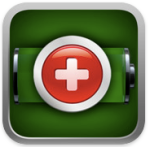
Torch for iPhone 4- The names says it all really. It turns the LED flash on the back of your iPhone 4 into a torch, allowing you to illuminate darkened areas. Torch for iPhone 4 will also allow you to send Morse code, via the flashing light, if you happen to know it. The App features a nice user interface, with some detailed metallic textures being used. As you may have guessed by now, this App is only for iPhone 4 users. (£0.59)
RedLaser- This App aims to help shoppers save money when they are out and about with their iPhone. RedLaser makes use of the camera that’s integrated into your iDevice to scan barcodes and then with this information, perform a price comparison search to find the best price for the product that you’ve scanned. For times when the camera fails to read the barcode, the App uses a smart search feature combined with a manual code entry form to find the product. The App reads barcodes from both the US, UK and Europe. (Free)
Battery Doctor Pro- This App is aimed around making sure that you get the most of your iDevice’s battery life. Batttery Doctor Pro gives you detailed statistics on your battery and from that, it can predict how much time you’ll squeeze out of the battery, based on 16 usage models. As well as this, the App gives a health report on the state of your battery, gives tips on extending the life of your batter and logs each time your charge and the duration. Overall, this App is a must for all users, since we all could do we getting an extra few minutes out of our battery. (£0.59)
Weather :
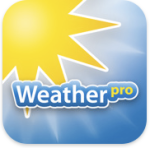

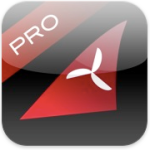
Weather Pro- For when the stock weather App won’t cut it, the Weather Pro App will. The App covers over 2000,000 locations worldwide with seven day forecasts. The App focuses around detailed weather forecasts and weather radar can be displayed for the majority of European countries, as well as the USA. The App boasts a clean interface that centres around displaying the weather information on a light blue background. The App is also optimised to work off any type of data connection, whether that be a weak EDGE connection or a strong WiFi signal. (£2.39)
AccuWeather- For those who take the forecast a little less seriously and would rather not shell out for an App. AccuWeather is still heavy with the details, giving users access to information such as air quality, UV index levels and radar. The App also features a clean interface, with a small ad banner along the top. Overall, this is a great, free alternative to the default Weather App. (Free)
Windfinder Pro- This App is aimed at kitesurfers, windsurfers, sailors and paragliders. The App gives forecasts for over 15000 locations worldwide and gives information such as wind speed, wind direction, air temperature, cloud coverage and perception, just to name a few. (£1.19)
Got an App that you think should be in here? Let’s hear about it, in the comments section below. Part one of this post is available here. Part two of this post is available here.
 September, the turn of the seasons, summer to Autumn- a return to work or education after a well earned holiday- a new start. For Apple, the ninth month in the year signals the annual refresh of their beloved iPod range. The whole product line, from the Shuffle to the Touch, gets revamped, in time for Christmas. However, this year, there was a clear omission from the line up. An omission, which has been predicted by many for the last few years, of a product in the iPod family. This product was the forefather of the iOS offspring that we all know and love; a product which, played a central role in the recovery and revival of Apple at the turn of millennium. This product is, the iPod, or the iPod Classic, as it’s come to be known in recent times.
September, the turn of the seasons, summer to Autumn- a return to work or education after a well earned holiday- a new start. For Apple, the ninth month in the year signals the annual refresh of their beloved iPod range. The whole product line, from the Shuffle to the Touch, gets revamped, in time for Christmas. However, this year, there was a clear omission from the line up. An omission, which has been predicted by many for the last few years, of a product in the iPod family. This product was the forefather of the iOS offspring that we all know and love; a product which, played a central role in the recovery and revival of Apple at the turn of millennium. This product is, the iPod, or the iPod Classic, as it’s come to be known in recent times.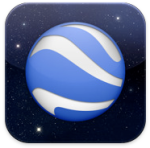





 Welcome to the final, ‘I’ve bought an iPhone…now what? post. For links to the first and second post, see the bottom of this post. In this final roundup of Apps, I cover the following genres from the Appstore: Productivity, Reference, Social Networking, Sports, Travel and Weather. To download an App, click on the relevant App icon.
Welcome to the final, ‘I’ve bought an iPhone…now what? post. For links to the first and second post, see the bottom of this post. In this final roundup of Apps, I cover the following genres from the Appstore: Productivity, Reference, Social Networking, Sports, Travel and Weather. To download an App, click on the relevant App icon.



















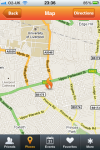

 Unfortunately there is no magical formula for finding a good App. The Appstore has well over 225,000 Apps on the store, at the time of writing, and as a result trying to find a good App, amongst the mediocrity and down right rubbish, can be quite a daunting and a time consuming task. However, in an attempt to provide a guide for you, and other weary App hunters, I have put together some pointers for finding good Apps.
Unfortunately there is no magical formula for finding a good App. The Appstore has well over 225,000 Apps on the store, at the time of writing, and as a result trying to find a good App, amongst the mediocrity and down right rubbish, can be quite a daunting and a time consuming task. However, in an attempt to provide a guide for you, and other weary App hunters, I have put together some pointers for finding good Apps. Our lives are increasingly becoming encompassed in the digital; our memories, events and moments are captured on digital devices, edited on digital devices and stored on digital devices. As a result, we place a heavy reliance on the reliability of the hard drive that we choose to store our photos, videos, music and documents. We are but a fatal error away from loosing everything to the digital abyss. Consequently, people are increasingly using different back up methods to safeguard against the inevitable hard drive failure. One such service, is that of Dropbox, which combines an online and desktop service, with a recently released Application for the iOS platform.
Our lives are increasingly becoming encompassed in the digital; our memories, events and moments are captured on digital devices, edited on digital devices and stored on digital devices. As a result, we place a heavy reliance on the reliability of the hard drive that we choose to store our photos, videos, music and documents. We are but a fatal error away from loosing everything to the digital abyss. Consequently, people are increasingly using different back up methods to safeguard against the inevitable hard drive failure. One such service, is that of Dropbox, which combines an online and desktop service, with a recently released Application for the iOS platform.

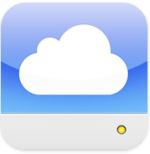

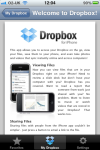
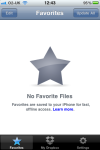


 For owners of the 3G iPhone and 2nd Generation iPod Touch, it’s been quiet the roller coaster ride. First, back in January, it was announced that along with the 3GS, iPhone 4 and iPad, their devices would be supported in the upcoming iOS 4 software update. This was a relative high, since Apple was doing something that no other phone manufacture had done; continuing to support older Generation phones.
For owners of the 3G iPhone and 2nd Generation iPod Touch, it’s been quiet the roller coaster ride. First, back in January, it was announced that along with the 3GS, iPhone 4 and iPad, their devices would be supported in the upcoming iOS 4 software update. This was a relative high, since Apple was doing something that no other phone manufacture had done; continuing to support older Generation phones. For users that are still bitter about Apple pulling support for Game Centre, there are alternatives out there for you. One of the biggest multiplayer services, that existed far before Apple’s Game Centre, is that of
For users that are still bitter about Apple pulling support for Game Centre, there are alternatives out there for you. One of the biggest multiplayer services, that existed far before Apple’s Game Centre, is that of 
